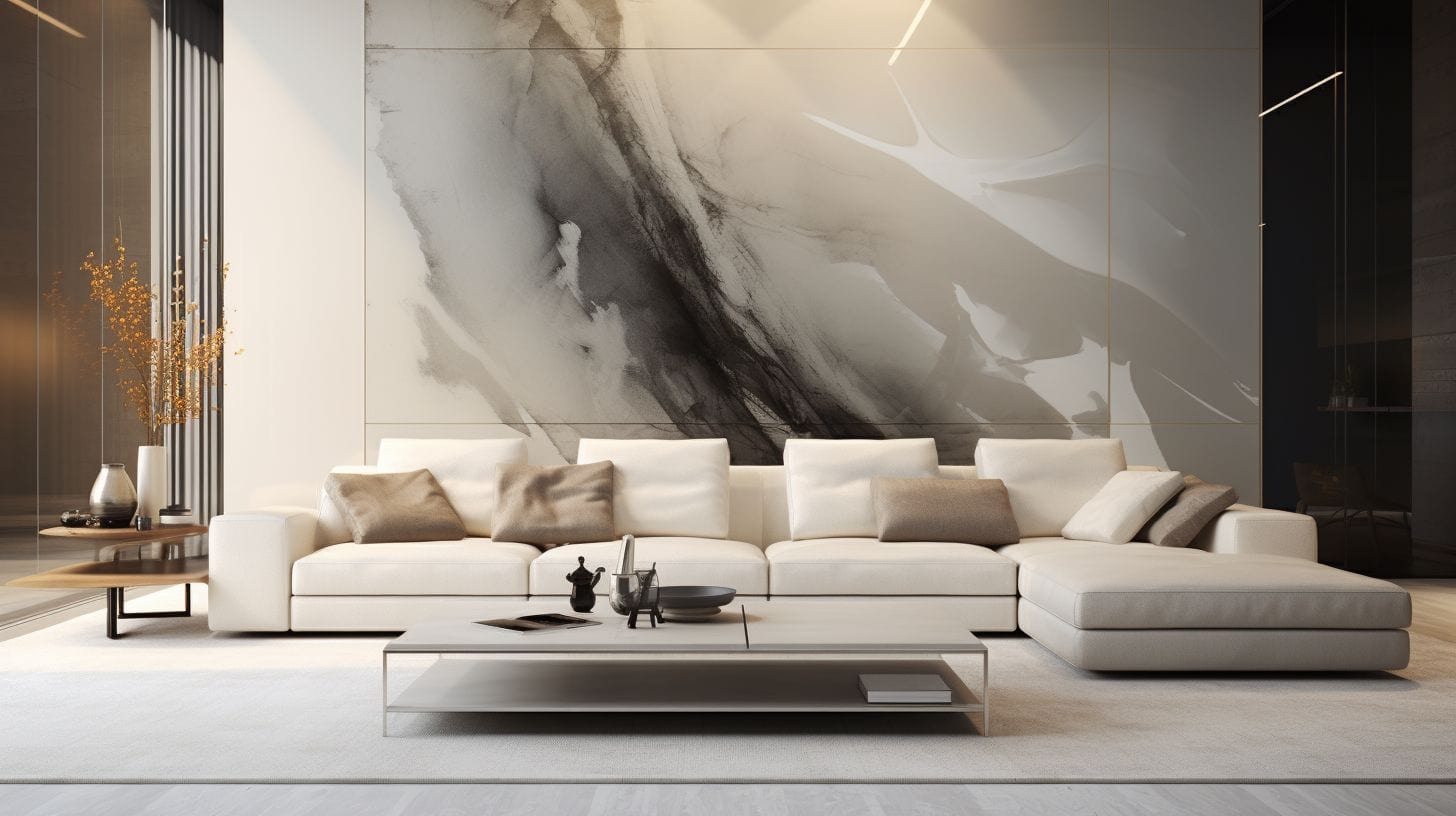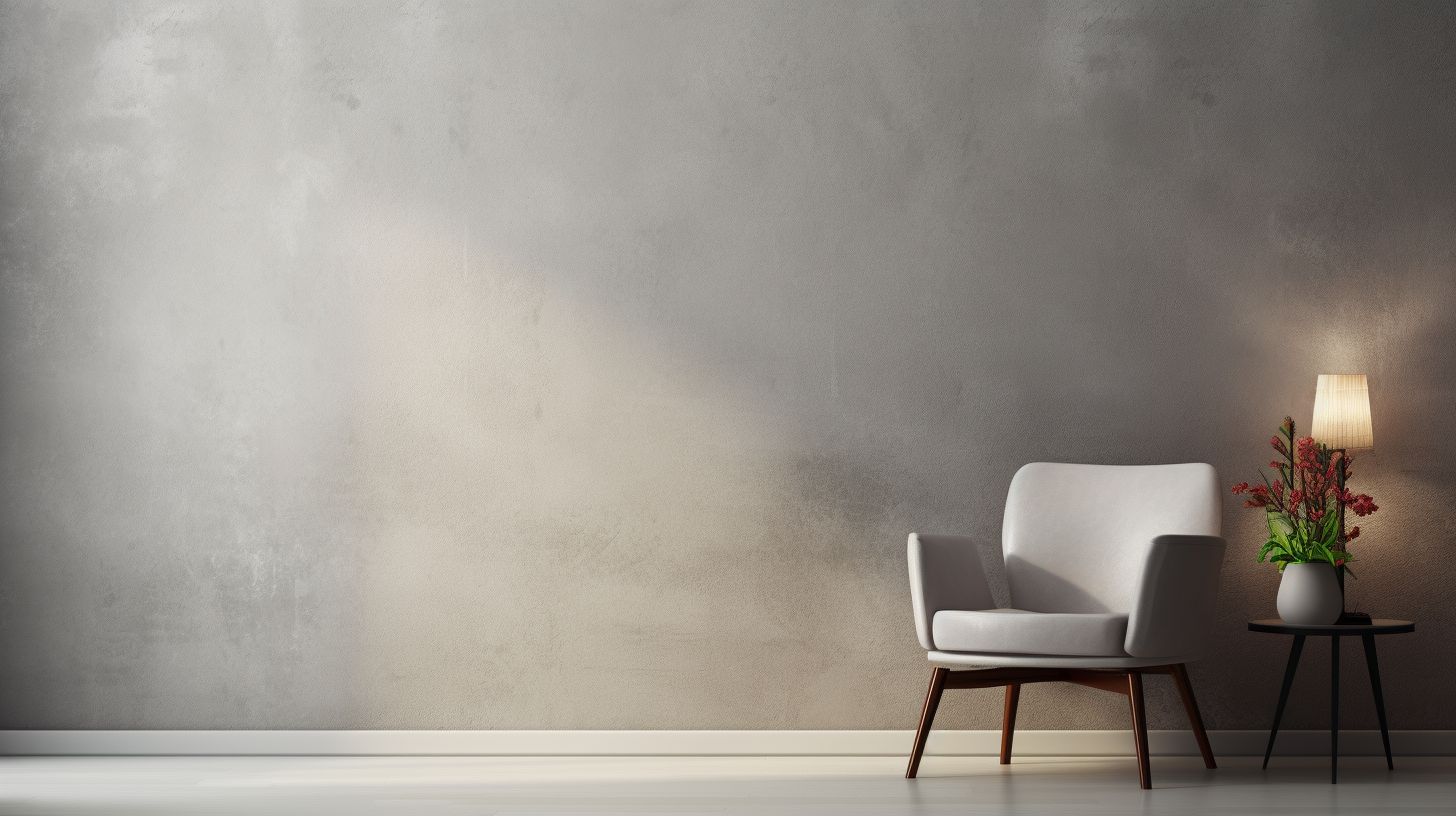The Evolution of Self-Levelling Venetian Plaster
Venetian plaster, with its rich history and luxurious finish, has evolved to meet modern design needs. Self-levelling Venetian plaster is a recent innovation that combines the timeless beauty of traditional plaster with advanced materials and techniques. This new form of plaster offers unique properties that make it ideal for a variety of applications, both residential and commercial.
Growing Popularity and Unique Properties
Self-levelling Venetian plaster has gained popularity due to its ease of application and the flawless finish it provides. Unlike traditional plasters, which require skilled trowelling, self-levelling plaster flows and spreads evenly across surfaces, creating a smooth, seamless finish. This characteristic makes it a preferred choice for designers and builders looking for efficiency without compromising on aesthetic appeal.

Characteristics and Benefits
Key Characteristics
Composition and Ingredients
Self-levelling Venetian plaster is composed of a blend of cementitious materials, polymers, fine aggregates, and pigments. The key ingredients include:
- Cementitious Materials: Provide strength and durability.
- Polymers: Enhance flexibility and adhesion, allowing the plaster to bond well with various substrates.
- Fine Aggregates: Ensure a smooth, even texture.
- Pigments: Offer a wide range of colours for customisation.
Self-Levelling Properties
The standout feature of self-levelling Venetian plaster is its ability to flow and spread evenly across surfaces. This self-levelling property is achieved through a carefully balanced formulation that allows the plaster to settle into a smooth, uniform layer without the need for extensive trowelling or finishing work.
Smooth, Seamless Finish
Self-levelling Venetian plaster creates a flawless, seamless surface that is both visually stunning and easy to maintain. The even distribution of the material eliminates imperfections and ensures a consistent texture and colour throughout the application area.
Benefits of Self-Levelling Venetian Plaster
Time-Saving Application
One of the primary advantages of self-levelling Venetian plaster is its time-saving application process. The self-levelling nature of the plaster reduces the need for skilled labor and extensive finishing work, allowing for faster project completion. This efficiency is particularly beneficial for large-scale projects or those with tight deadlines.
High Durability and Strength
Self-levelling Venetian plaster offers exceptional durability and strength. The combination of cementitious materials and polymers creates a robust surface that can withstand heavy use and resist cracking, chipping, and other forms of damage. This makes it suitable for high-traffic areas and environments where durability is paramount.
Versatile Design Options
The flexibility in design is another significant benefit of self-levelling Venetian plaster. It can be customised with a wide range of pigments to achieve various colours and finishes, from matte to high-gloss. This versatility allows designers to create bespoke looks that match the specific aesthetic goals of a project, whether modern, traditional, or eclectic.
Enhanced Aesthetic Appeal
The smooth, seamless finish of self-levelling Venetian plaster enhances the aesthetic appeal of any space. Its ability to create a consistent, polished look makes it ideal for applications where visual impact is essential. The plaster’s reflective qualities can also enhance lighting and add a sense of depth and dimension to interiors.
Best Practices for Application
Surface Preparation
Cleaning and Priming the Surface
Proper surface preparation is crucial for achieving a flawless finish with self-levelling Venetian plaster. Begin by thoroughly cleaning the surface to remove any dust, grease, or existing coatings. This ensures optimal adhesion of the plaster. Any cracks or holes should be repaired, and the surface should be sanded to create a smooth, even base. Applying a primer suitable for self-levelling plaster is essential to enhance adhesion and ensure a uniform finish.
Mixing and Application Techniques
Proper Ratios and Mixing Methods
Mixing self-levelling Venetian plaster requires precision to achieve the desired consistency and performance. Follow the manufacturer’s instructions regarding the ratios of cementitious materials, polymers, aggregates, and pigments. Use a mechanical mixer to blend the ingredients thoroughly, ensuring a smooth, lump-free mixture. The consistency should be fluid enough to flow and level on its own.
- Mixing Steps:
- Add the dry ingredients to a mixing container.
- Gradually add water while mixing to achieve the desired consistency.
- Mix slowly to avoid introducing air bubbles, which can affect the final finish.
Pouring and Spreading Techniques
Apply the self-levelling plaster by pouring it onto the prepared surface and allowing it to spread naturally. Use a notched trowel or spreader to help distribute the material evenly. Work in sections, ensuring each area is covered uniformly before moving on to the next.
- Pouring: Start pouring the plaster at one corner of the area and work your way across, allowing gravity and the material’s self-levelling properties to do most of the work.
- Spreading: Use a notched trowel or spreader to assist in distributing the plaster evenly. Maintain a consistent thickness to ensure a smooth, uniform finish.
Ensuring Even Coverage and Levelling
To ensure even coverage and proper levelling, monitor the surface closely as the plaster spreads. Adjust as needed to eliminate any high or low spots. Use a spiked roller to remove air bubbles and help the plaster settle into a smooth, level layer.
- Spiked Roller: Roll over the wet plaster with a spiked roller to eliminate air bubbles and ensure a consistent thickness.
- Levelling Tool: Use a levelling tool to check the surface for any irregularities and make adjustments as necessary.
Curing and Finishing
Recommended Curing Times
Allow the plaster to cure according to the manufacturer’s recommendations. Proper curing is essential to achieve the desired strength and durability. Avoid disturbing the surface during the curing process to prevent imperfections.
- Initial Curing: Typically, the plaster will set within a few hours, but avoid heavy traffic or additional work for at least 24 hours.
- Full Cure: Complete curing may take several days, depending on the product and environmental conditions.
Polishing and Sealing for Added Protection
After the plaster has cured, apply a suitable sealer to protect the surface and enhance its appearance. Sealers help prevent stains and damage, making the surface easier to clean and maintain.
- Polishing: If a high-gloss finish is desired, polish the surface with a mechanical buffer or polishing tool. This step enhances the reflective qualities of the plaster.
- Sealing: Apply a sealer designed for self-levelling plaster according to the manufacturer’s instructions. This will provide a protective layer that enhances durability and maintains the finish.
Techniques for Achieving a High-Gloss Finish
To achieve a high-gloss finish, follow these steps:
- Burnishing: Use a burnishing tool or high-speed buffer to polish the surface to a high sheen. Apply firm, even pressure in overlapping motions to achieve a uniform gloss.
- Multiple Layers of Sealer: Apply multiple thin layers of sealer, allowing each layer to dry completely before applying the next. Buff the final layer to enhance the gloss.
Common Uses in Modern Design
Residential Applications
Living Rooms and Bedrooms
Self-levelling Venetian plaster can transform living rooms and bedrooms into sophisticated, elegant spaces. Its smooth, seamless finish creates a luxurious atmosphere that enhances the overall decor. Use it on feature walls to create a striking focal point or apply it to entire rooms for a cohesive, polished look. The reflective properties of the plaster can enhance natural light, making rooms feel brighter and more spacious.
Kitchens and Bathrooms
In kitchens and bathrooms, self-levelling Venetian plaster offers both aesthetic appeal and practical benefits. Its moisture-resistant properties make it ideal for high-humidity areas. Apply it to walls, backsplashes, and even floors to create a seamless, easy-to-clean surface that adds a touch of luxury. The durability of the plaster ensures it withstands the wear and tear of daily use while maintaining its beautiful finish.

Commercial Applications
Offices and Retail Spaces
Self-levelling Venetian plaster is well-suited for commercial environments such as offices and retail spaces. Its durability and low maintenance requirements make it a cost-effective solution for high-traffic areas. Use it to create stylish, professional atmospheres in reception areas, conference rooms, and executive offices. In retail spaces, the smooth, reflective finish can enhance product displays and create an inviting shopping experience.
Restaurants and Hotels
In the hospitality industry, self-levelling Venetian plaster adds sophistication and elegance to restaurants and hotels. Its versatile application allows for stunning feature walls, elegant dining areas, and inviting lobby spaces. The material’s resistance to wear and moisture ensures that it maintains its beauty and functionality even in busy, high-use environments. Customisable textures and finishes allow designers to create unique, memorable spaces that enhance the guest experience.
Artistic and Decorative Uses
Accent Walls and Focal Points
Self-levelling Venetian plaster is perfect for creating accent walls and focal points in any setting. Its ability to achieve a wide range of vibrant colours and finishes makes it an excellent choice for highlighting architectural features or creating dramatic visual effects. Use it to draw attention to specific areas in a room, such as a fireplace, a headboard wall in a bedroom, or a reception desk in a commercial space.
Custom Installations and Furniture
Beyond walls and ceilings, self-levelling Venetian plaster can be applied to custom installations and furniture. Coating tables, benches, and other furniture pieces with coloured plaster creates cohesive, elegant designs that complement the overall decor. Its flexibility and durability make it suitable for both decorative and functional elements, allowing for endless creative possibilities.
Maintenance and Care
Regular Cleaning
Dusting and Gentle Cleaning Methods
Maintaining the appearance of self-levelling Venetian plaster is straightforward and requires minimal effort. Regular dusting with a soft, dry cloth or a feather duster helps keep the surface free from dust and debris. For more thorough cleaning, use a damp cloth with a mild, pH-neutral soap. Gently wipe the surface, ensuring not to saturate it with water, which can affect the plaster’s integrity.
Avoiding Abrasive Cleaners
To preserve the plaster’s surface and vibrant colours, avoid using abrasive cleaners or scrubbing tools. These can damage the finish and dull the natural sheen. Stick to non-abrasive, pH-neutral cleaning products and soft cleaning cloths. Always test any cleaning product on a small, inconspicuous area before applying it to the entire surface to ensure it does not harm the plaster.
Periodic Maintenance
Reapplying Sealers or Wax for Protection
To maintain the durability and aesthetic appeal of self-levelling Venetian plaster, periodic reapplication of sealers or wax may be necessary. This helps to refresh the surface and restore its original lustre.
- Sealer Application: Apply a thin, even layer of a suitable sealer using a soft cloth or brush. Allow it to dry completely before buffing with a clean, dry cloth to enhance the shine and provide a protective layer.
- Wax Application: For an extra layer of protection and gloss, consider applying a natural wax designed for self-levelling plaster. Use a soft cloth to apply the wax evenly, then buff the surface to achieve the desired level of shine.
Repairing Minor Imperfections
Over time, minor imperfections such as small scratches or chips may develop. These can be repaired relatively easily to maintain the pristine appearance of the plaster.
- Small Scratches: Lightly sand the scratched area with fine-grit sandpaper (around 400-600 grit). Reapply a thin layer of plaster if necessary, blending it seamlessly with the surrounding area. Burnish the repaired area to restore the finish.
- Chips and Cracks: Fill any chips or cracks with a matching plaster mixture. Once dried, sand the area smoothly and reapply the final layers of plaster, ensuring the texture matches the existing finish.
Long-Term Care
Protecting the Surface from Damage
To ensure the longevity of self-levelling Venetian plaster, take measures to protect it from physical damage. Avoid placing heavy objects or sharp items directly against the plastered walls, as these can cause dents or scratches. Use protective padding or barriers if necessary, especially in high-traffic areas, to safeguard the surface.
Environmental Considerations for Longevity
Self-levelling Venetian plaster can be sensitive to environmental conditions such as high humidity or extreme temperature changes. Ensure that the space is well-ventilated to prevent moisture build-up, which can lead to mold or mildew growth. In areas with fluctuating temperatures, take precautions to maintain a stable indoor climate, minimising the impact on the plaster.
Conclusion
The Impact of Self-Levelling Venetian Plaster in Modern Design
Self-levelling Venetian plaster offers a unique blend of aesthetic appeal, practicality, and durability, making it a versatile choice for contemporary interior and exterior design. Its seamless, smooth finish and ability to create vibrant, customised colours and textures have made it a popular option for a wide range of applications, from residential interiors to commercial spaces.
Key Takeaways on Characteristics and Benefits
Self-levelling Venetian plaster stands out due to its composition of cementitious materials, polymers, fine aggregates, and pigments. Its self-levelling properties and smooth, seamless finish make it a time-saving and efficient choice for large-scale projects. The material’s high durability, strength, and low maintenance requirements further enhance its appeal.
Best Practices for Application
Achieving the best results with self-levelling Venetian plaster requires proper surface preparation, precise mixing, and careful application. Ensuring even coverage and proper levelling is crucial for a flawless finish. Post-application, polishing and sealing help to protect the surface and enhance its aesthetic appeal.
Versatile Applications and Easy Maintenance
Self-levelling Venetian plaster is suitable for a variety of settings, including residential, commercial, and artistic applications. Its versatility allows it to be used on floors, walls, countertops, and custom installations. Regular cleaning and periodic maintenance, such as reapplying sealers or wax, help preserve its beauty and functionality over time.
Enhancing Modern Design with Self-Levelling Venetian Plaster
Incorporating self-levelling Venetian plaster into modern design projects adds both visual and functional value. Its timeless beauty, combined with its practicality and ease of maintenance, makes it a superior choice for creating elegant and durable interiors.
Experience Self-Levelling Venetian Plaster in Sydney with Venetian Plasterer
At Venetian Plasterer, we bring the innovative benefits of self-levelling Venetian plaster to our Sydney clients. Known for its smooth, seamless finish and ease of application, self-levelling Venetian plaster is perfect for modern interiors. Our expert team understands the unique characteristics of this material, ensuring that each application is flawless and durable. Choose our professional services for Venetian plaster walls to enjoy the aesthetic and practical advantages of self-levelling plaster in your home or business.
Related

